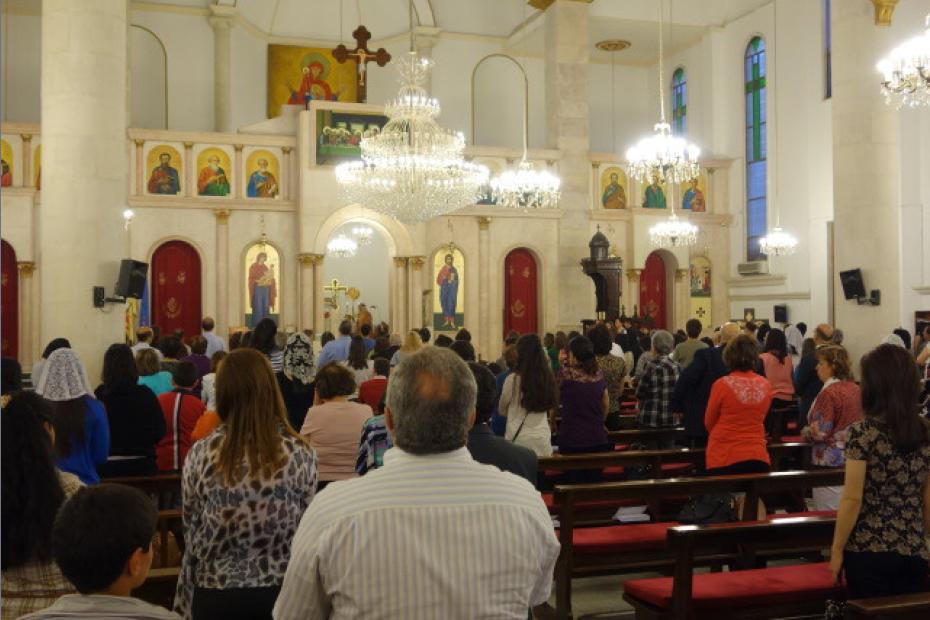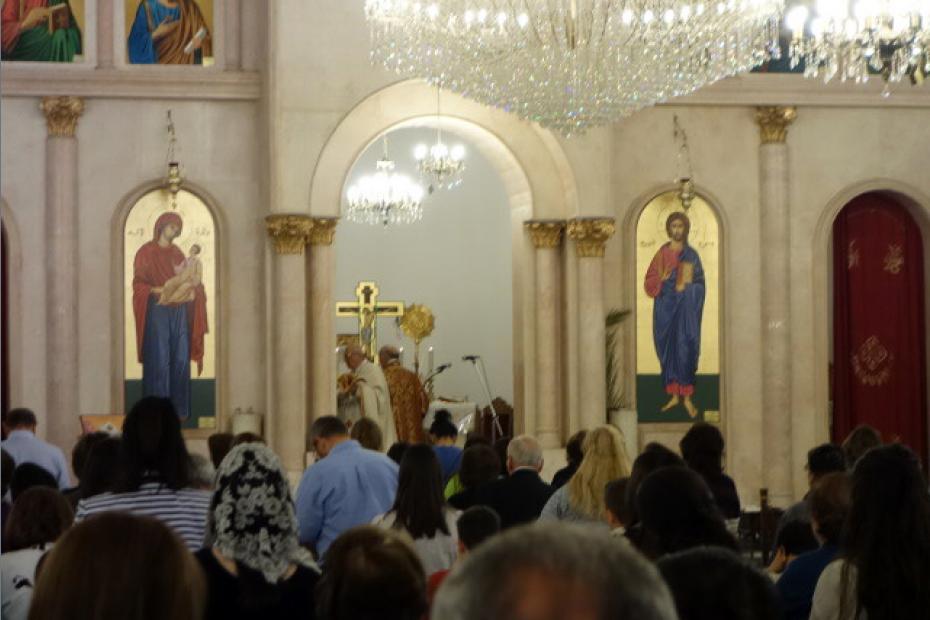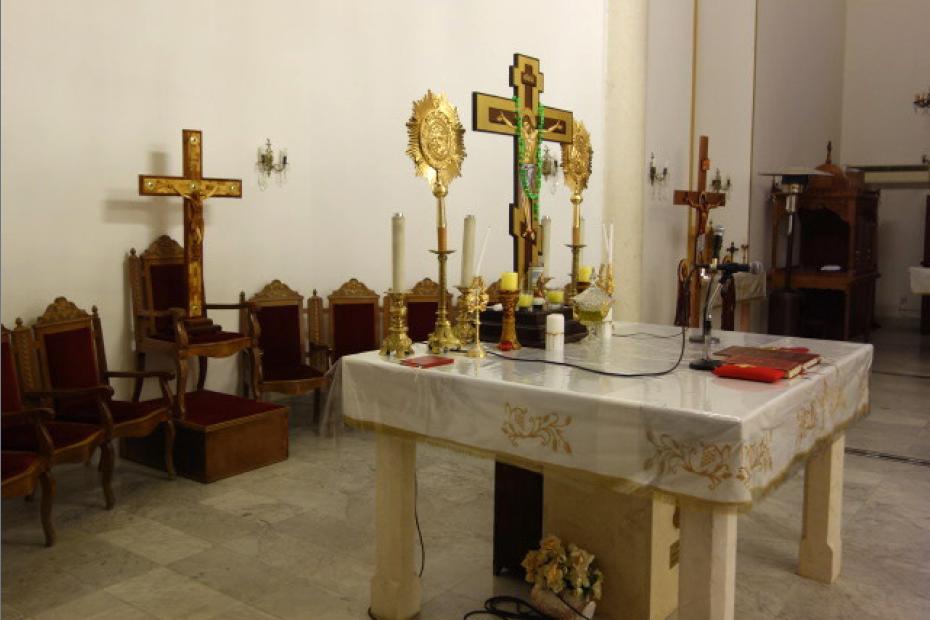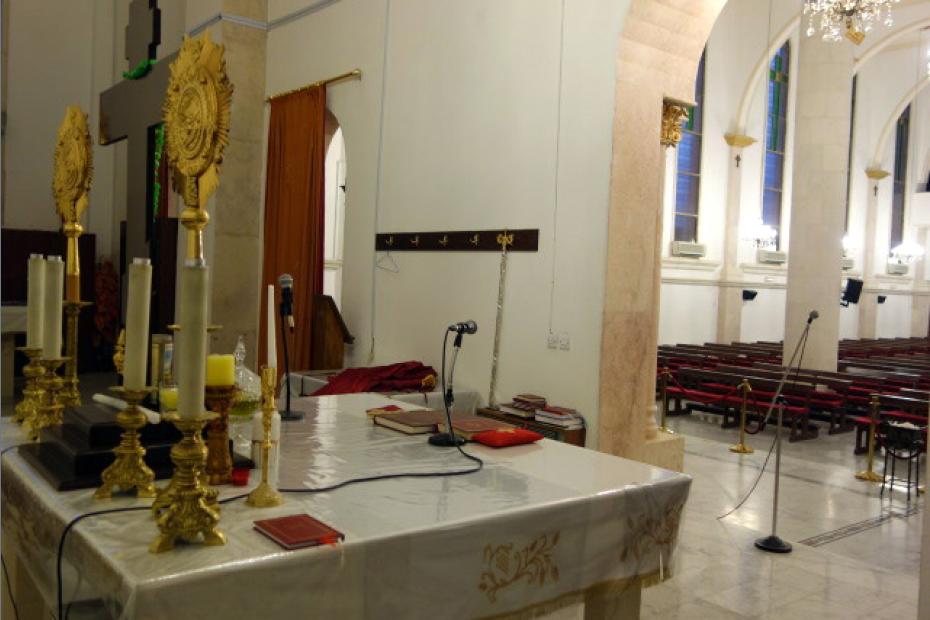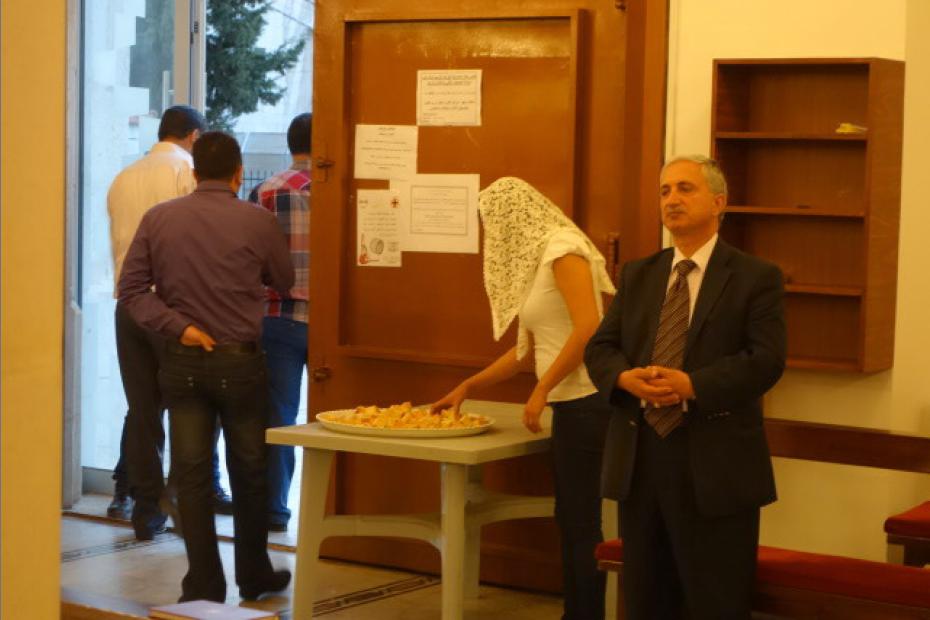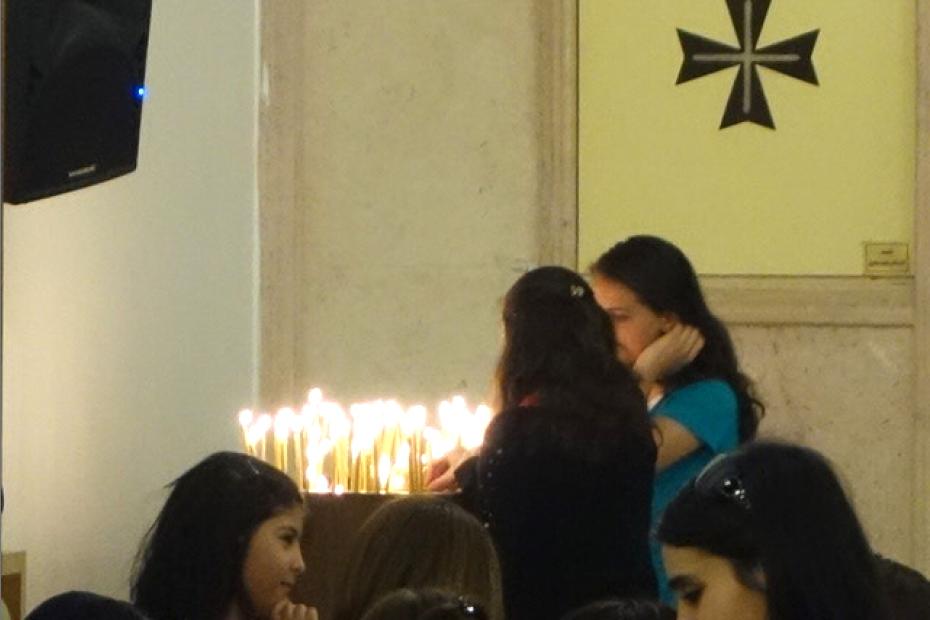Greek Melkite Catholics worship according to a Greek form of the Byzantine rite, an ancient rite that developed in Constantinople, in the Eastern half of the Roman Empire. It weaves music, movement, iconography and prayer.
Much more deserves to be said about the Byzantine liturgy, but several aspects of the liturgy from a lay perspective might stand out immediately for those not familiar with it.
The Greek Melkite liturgy, though Byzantine in form, is celebrated primarily in Arabic, with some use of Greek. (In countries outside the Middle East, it is often celebrated in the local language). It takes place largely at or behind the central door of a multi-doored wall known as an iconostasis, which as the name would suggest, is hung with icons. The altar lies behind the wall and is partially visible through the central door. Byzantine liturgy remains intentionally resplendent, with gold vestments and iconography, intended to signal a place where heaven and earth connect.
The celebrant usually faces in the same direction as the people, which is to say with his back to them, except for the blessings, readings and sermon. A deacon plays an important role in the service, moving back and forth between the people and the celebrant. Unaccompanied sung chant is integral to the liturgy.
Though worshippers traditionally stand throughout the liturgy at Melkite Orthodox churches, Melkite Catholic churches have pews or chairs, and the liturgy combines sitting and standing. In contrast to Roman custom, standing, rather than kneeling, is the primary devotional posture during Melkite Catholic worship. Melkites stand for the Consecration. In general, it is fair to say that there is a lot more movement around the nave of the church than would be typical in a Latin rite church. The bread used for communion is leavened, as is typical in the East, rather than unleavened, as is typical in the West. Worshippers cross themselves with the sign of the cross frequently during the liturgy, whenever the Trinity is invoked. In Jordan, many older women pray the Rosary through the Melkite liturgy, though this was something of an enigma to younger Greek Catholics.
